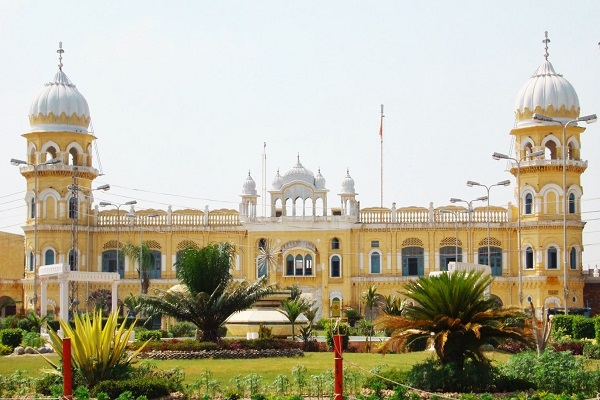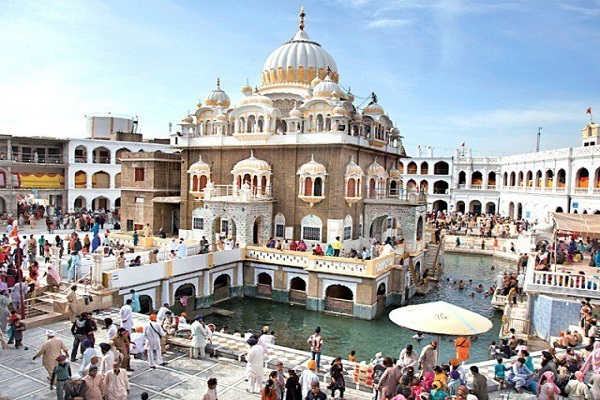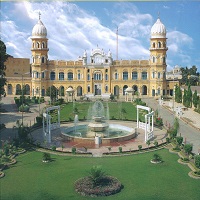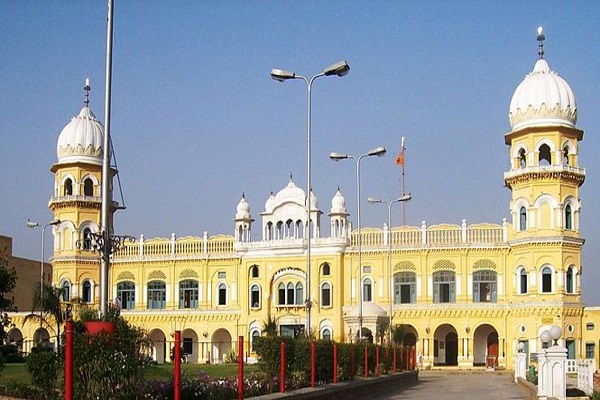Nankana Sahib is located in the Punjab province of Pakistan and is the administrative capital of the Nankan Sahib district. It is 352.8 km from Islamabad, the capital of Pakistan, and 62 km from the provincial capital, Lahore. The city is considered to be the birthplace (November 29, 1469), of the first guru and the founder of the Sikh faith, Baba Guru Nanak, who began preaching Sikhism from this town.
The city is the most important and sacred religious site for the Sikh religion. Every year hundreds of thousands of Sikhs from all over the world make a pilgrimage here. The city is situated amongst several important cities of the province such as Sheikhupura (40 km), Faisalabad (58 km), Lahore (62 km), Chiniot (75 km), Okara (75 km), and Kasur (80 km).
The city is also the birthplace of several well-known politicians, artists, and sportsmen. This article has every detail about the city, including Nankana Sahib History.
| Title | Description |
|---|---|
| Information | |
| Location: | Pakistan |
| In Urdu : | ننكانہ صاحِب |
| City Council: | Government of Punjab |
| Type: | Capital of Nankana Sahib District |
| Local Language Name: | Urdu was the native language of 0.41% |
| Province: | Punjab |
| Coordinates : | 31°27′0″N 73°42′24″E |
| District: | Nankana Sahib District |
| Region: | Punjab |
| First settled: | May 2005 |
| Elevation: | 187 m (614 ft) |
| Union councils: | 3 |
| Language | |
| Official Language: | Urdu |
| Native Language: | Punjabi |
| Other Languages: | Urdu.Punjabi.English |
| Government | |
| Type: | Government Of Punjab |
| Area | |
| Total Area: | 2,960 km2 (1,140 sq mi) |
| Time zone | |
| Time zone: | PST (UTC+5) |
| Codes | |
| Postal code: | 39100 |
| Dialing code: | 056 |
| Vehicle registration: | Three letters beginning with N and random four numbers |
Table of Contents
Nankana Sahib History
The city was founded in the 14th century by a Muslim Rajput of the Bhatti tribe, Rai Bhoi. Before the birth of Baba Guru Nanak, the town was known as Rai-Bhoi-Di-Talwandi. After the birth of Guru Nanak, the great-grandson of Rai Bhoi, Rai Bular Bhatti, renamed the city as Nanak Ana, i.e. Nankana.
The word Sikh is derived from the term Seekhna which means learning. It is believed that after the demise of Baba Guru Nanak; the Gurdwara Nankana Sahib was first constructed in 1600 CE. In 1819–20 CE, Maharaja Ranjit Singh, (1780 –1839) popularly known as Lion of Punjab (Sher-e-Punjab), renovated the Gurdwara.
In 1921, the Gurdwara Reform Movement (Akali Movement), resulted in conflict among the community and led to the historic massacre of Akali protestors. The agitation lasted until the Gurdwara’s control reverted to the Sikhs.
Western Punjab was predominant in a Muslim-populated region and supported the independence of Pakistan. Most population of the Sikhs and Hindus migrated to India while Muslims from India immigrated to Pakistan.
Geography
Geographical coordinates of this city are 31°27′0″N (latitude) and 73°42′24″E (longitude), and its elevation above sea level is 614 ft. (187 m). The total area of the district is 2960 km2 (1140 mi2) in length.
Nankana Sahib Climate
The climate of this city is like other regions of the province of Punjab that observes all four seasons. The summers, which last for roughly three months, are hot, humid, clear. The average temperature may rise as high as 48°C. Throughout the year, the temperature may fluctuate from 7.50°C to 42°C.
Winters are short and typically last for almost 2.3 months, with an average temperature of 11°C. The rainy period roughly lasts for 9.5 months, causing an average annual rainfall of 130.5 mm.
Population
The city is hometown to 79,540 people, according to the 2017 census. The population of the district is ,356,374 with a population density of 460/km2 (1200/mi2).

Nankana Sahib Culture
The city observes a blend of cultures because of the ethnic diversity in the region. Muslims, Sikhs, Hindus, and Christians cherish and celebrate all of their festivals and festivities devotedly. The majority of the Sikh community is seen in their traditional attire.
All communities wear all types of attires (eastern and western). Sikhs all over the world visit here, there are hundreds of food streets, restaurants, and hotels offering local as well as western dishes. The most favoured food items include:
- Biryani & Pulao
- Dahi Bhale.
- Dal Chawal
- Gol Gappe
- Lassi
- Limo pani
- ManPasand sweets
- Rabri
- Sugar cane rusk
Nankana Sahib Education
Education and educational facilities here are gradually improving. Private and public sector institutions are thriving. According to a survey conducted by Alif Ailaan, the district ranked at 26th position concerning infrastructure, facilities, and quality, etc. A list of some well-known institutions is given below:
- Govt College For Women Warburton N.S.
- Govt College Of Technology Sangla Hill NS.
- College for Women, Sangla Hill
- College for Women, Shahkot
- Degree College, Shahkot
- Guru Nanak Degree College for Boys, NS.
- Guru Nanak Degree College for Women NS.
- Islamia Degree College, Sangla Hill
- Technical Training Centre, (DMTC), Mananwala, District NS.
- Vocational Training Institute (W), Sangla Hill, Distt. NS.
- Punjab Group of Colleges NS.
- Star Institute NS.
- Virtual University Pakistan
Sports
There is a well-equipped sports complex here for a variety of indoor sports. People enjoy watching and playing:
- Cricket
- Football
- Hokey
Economy
The major economic activities and revenue generation are related to the pilgrimage of Sikh devotees visiting Nankana Sahib. The city produces the best quality of Basmati rice (Super Basmati).
Pakistan earns millions of dollars of foreign exchange by exporting this rice abroad. Industrial units also contribute its small share in the economic growth and GDP of Pakistan.

Industry
The city is not a major industrial city as compared to other cities in Punjab. Some industrial units in the city are providing not only work opportunities but also a source of income for livelihood to the local population. According to the data published by the government of Punjab, the following industrial units are working here:
- Brick Kilns (92)
- Flour Mills (05)
- Huda Sugar Mill (01)
- Marble Factories (12)
- Petrol pump (112)
- Rice Mills (151)
- Soap Factories (02)
- Textile Mills (12)
Agriculture
The total cultivable area here is 4,56,352 acres. The soil is fertile and favourable for cultivation. Crops such as rice, sugarcane, and wheat are hugely cultivated here.
Tourism
Following landmark-sites are worth visiting in Nankana Sahib:
- Quba Masjid
- Nankana Lake Resort.
- Residency of Baba Guru Nanak
- Gurdwara Janam Asthan.
- Rana Hunting & Luxury Resort
Languages
People can communicate through:
- Punjabi
- Urdu
- English
Travel
Nankana Sahib interchange Exit 3 on the M-3 motorway links the city with the outer regions for road travellers. Many conveyance facilities such as buses and omnibuses are operating for this region. Travellers and tourist from all over Pakistan can reach here by selecting one of these services.
The city is connected with a railroad network for inbound and outbound travellers. The station, now known as Baba Guru Nanak railway station, is located in the central city. There is no domestic airport here. Accessible air routes to the nearest airports include:
- Faisalabad International Airport (LYP), Faisalabad, 67.29 km
- Alama Iqbal International Airport (LHE), Lahore, 67.48 km
- Sialkot Airport, Islamabad (SKT), Sialkot, 34 km
Nankana Sahib Postal Code
Postal Code: 39100
Area Code: 056

